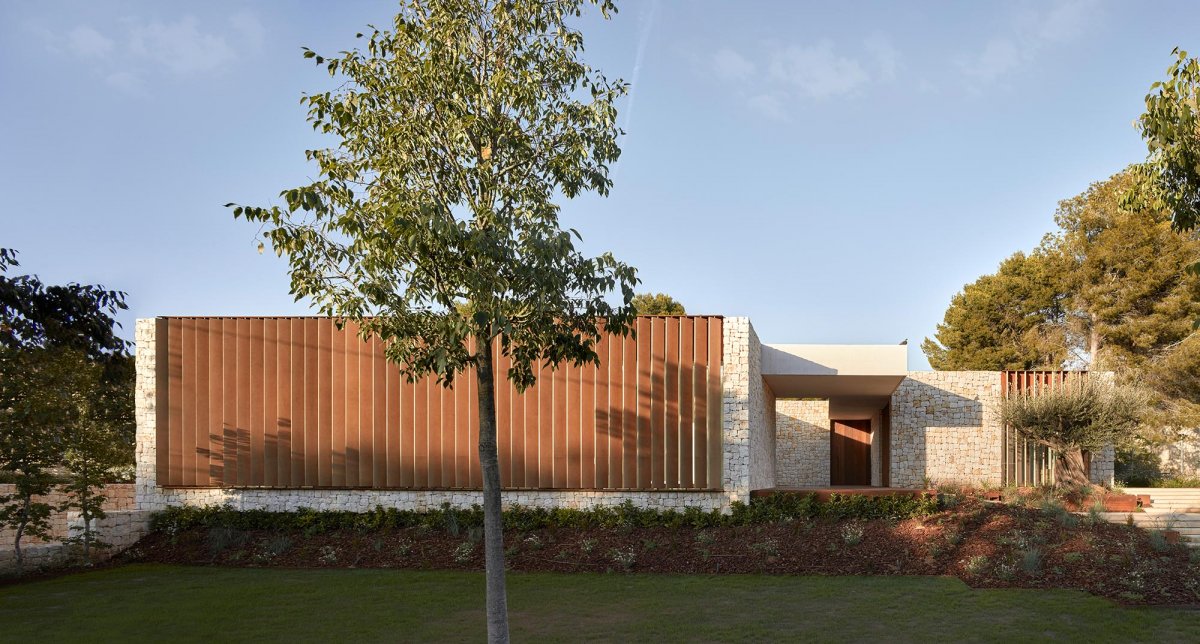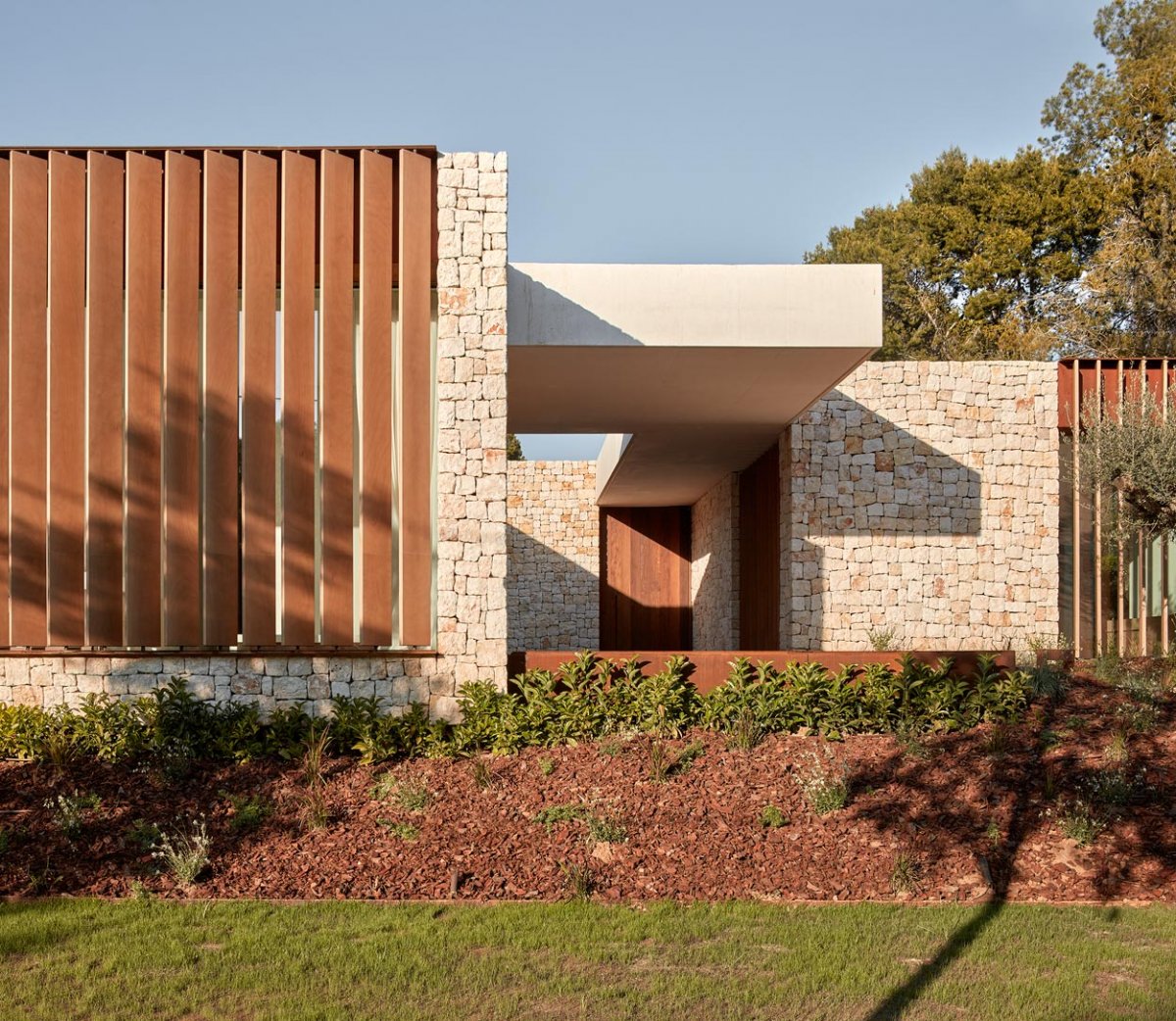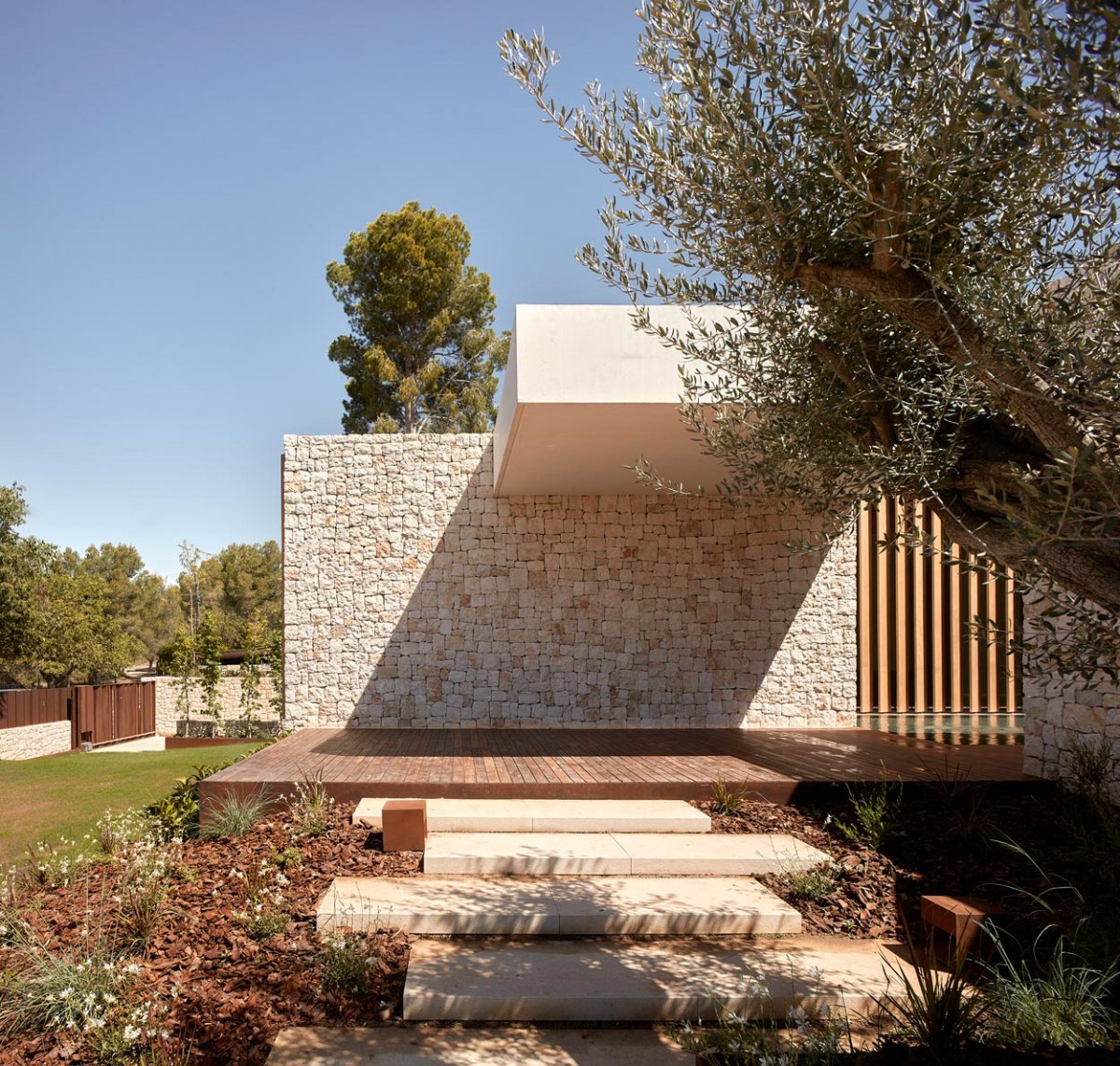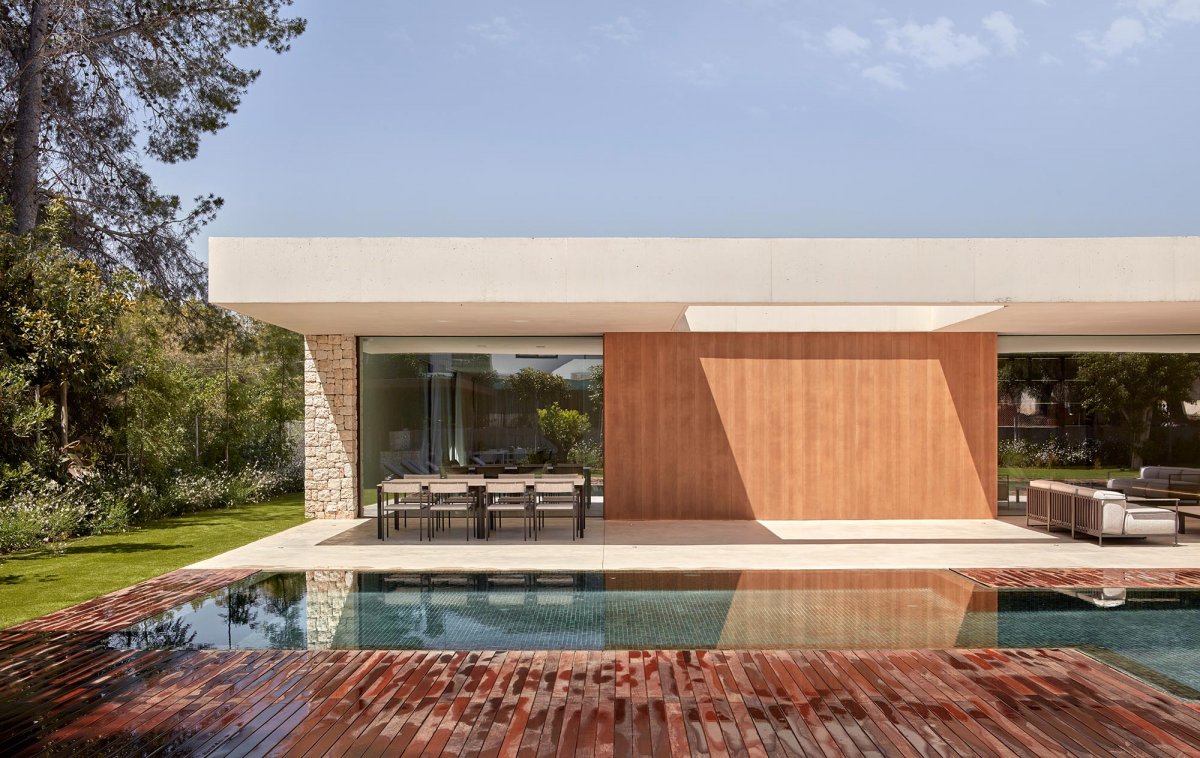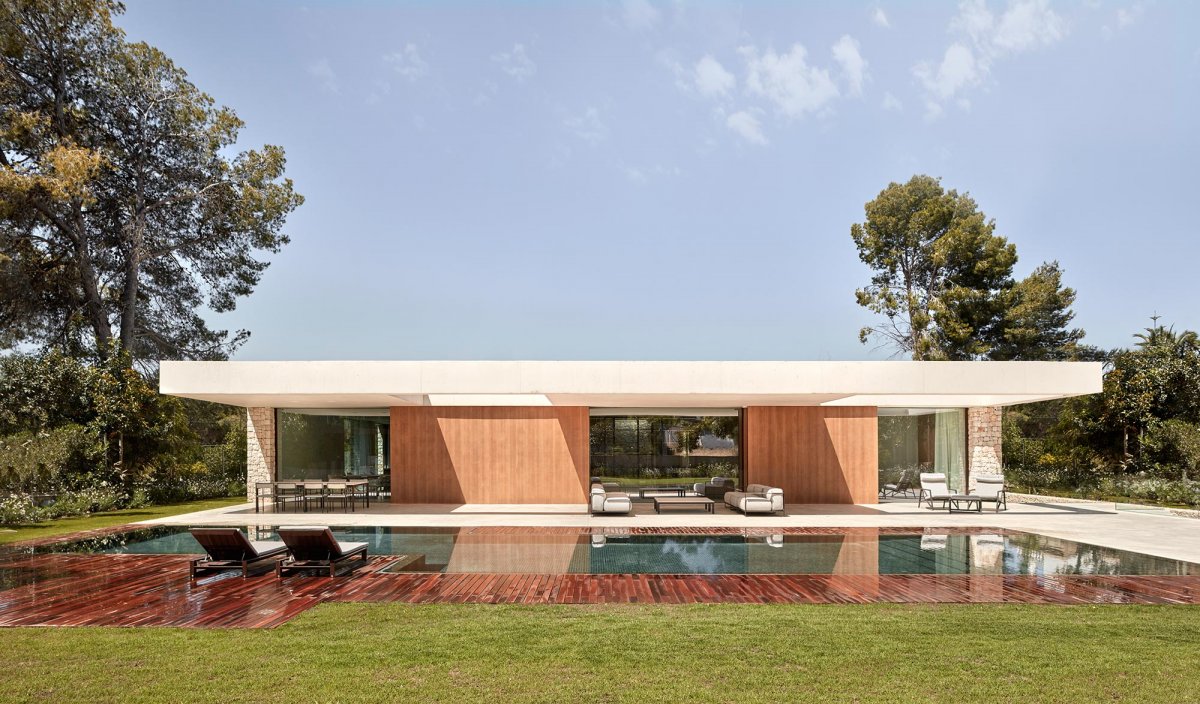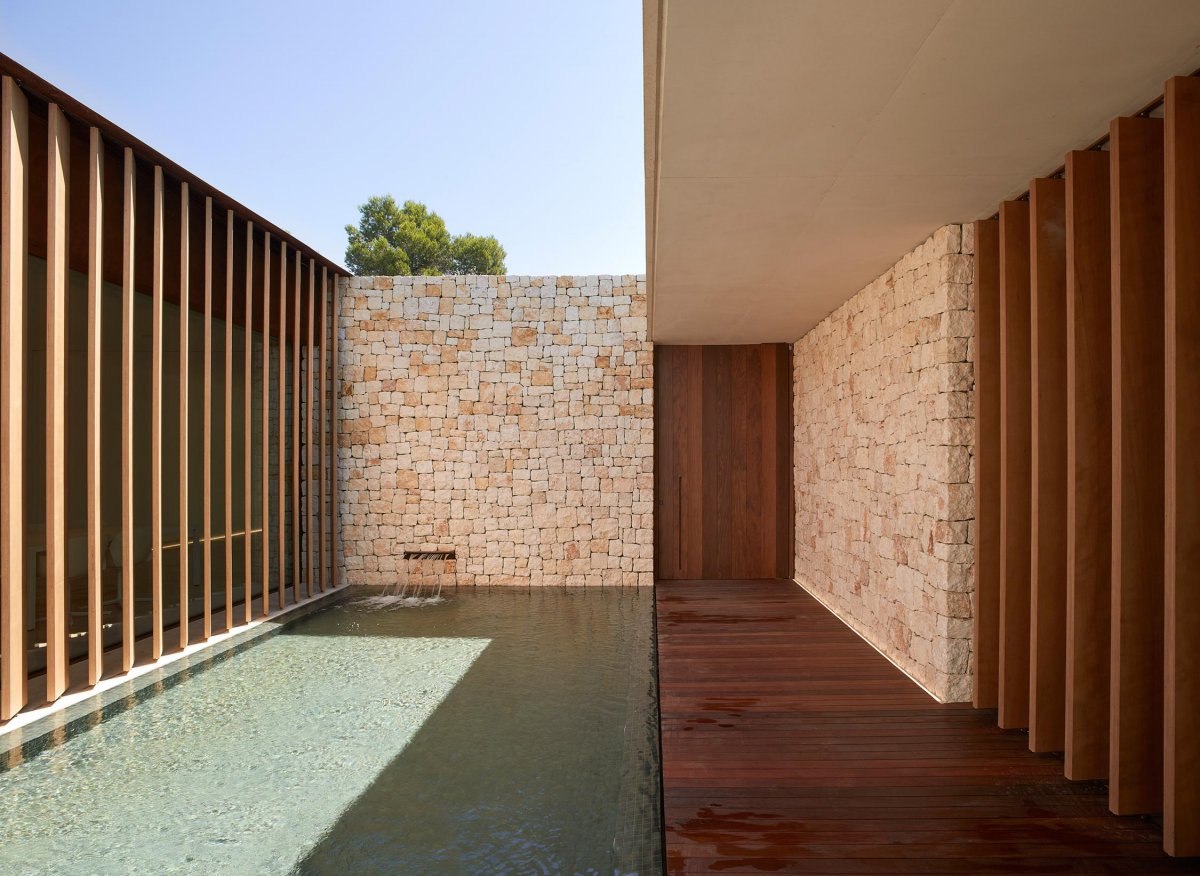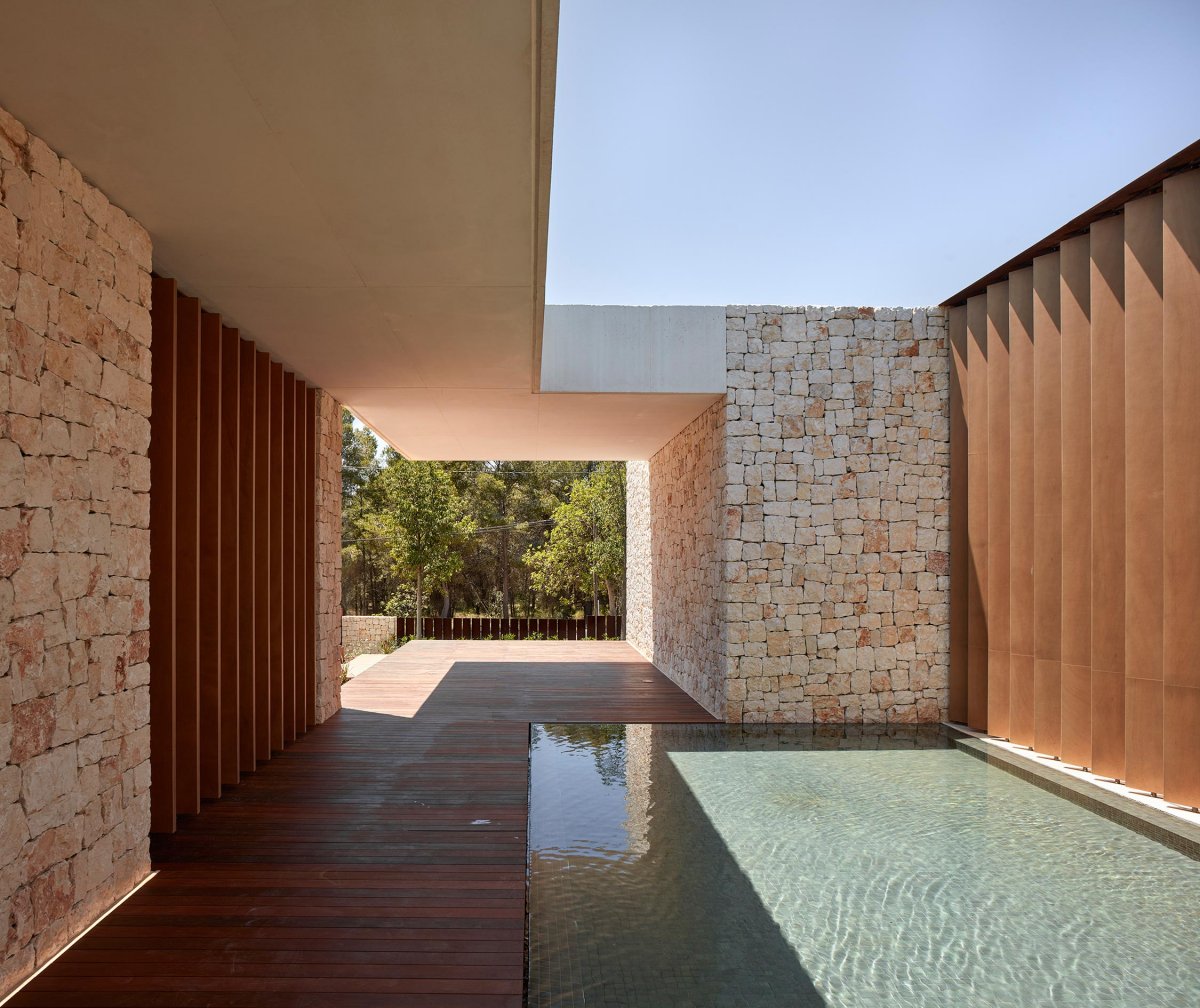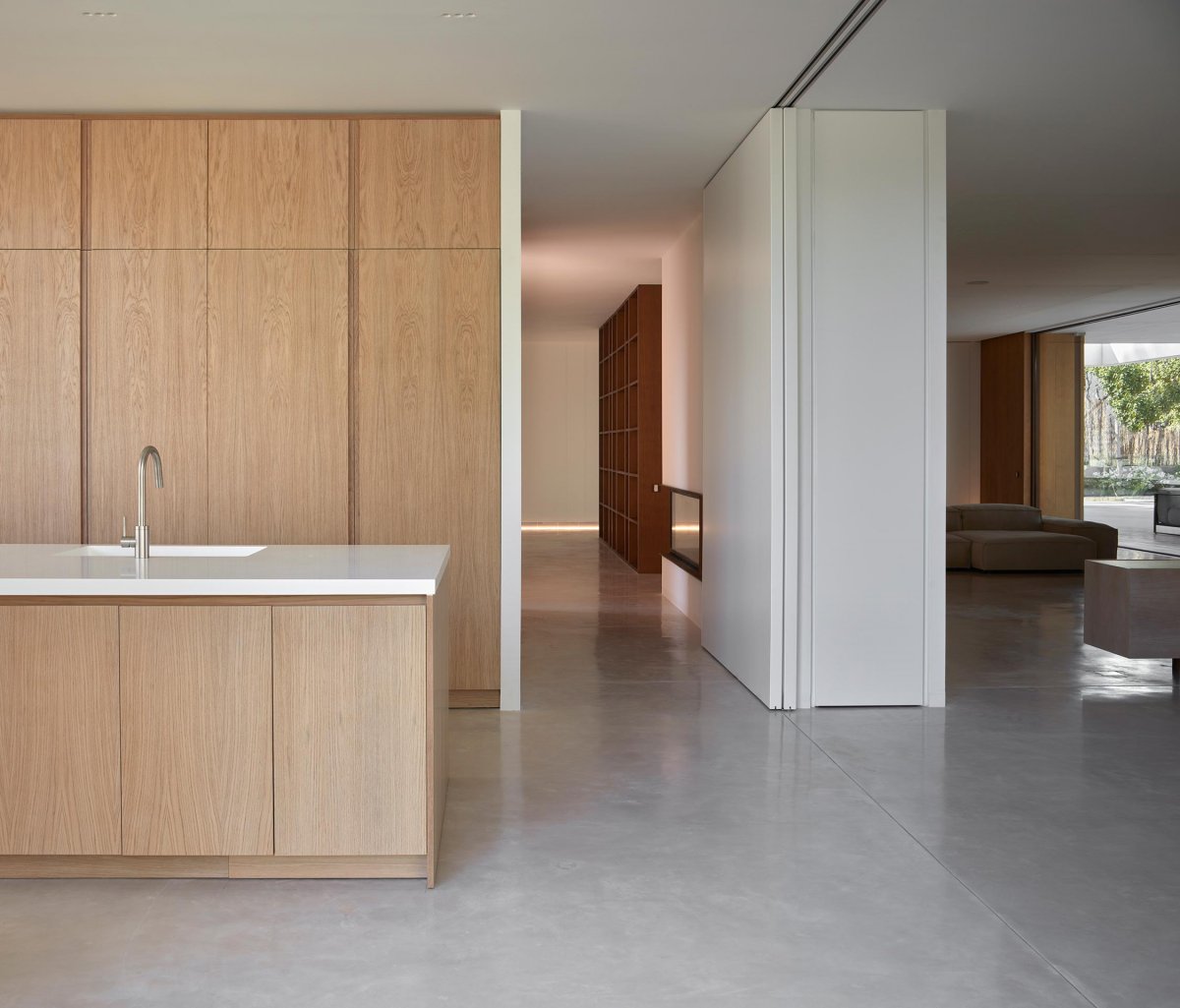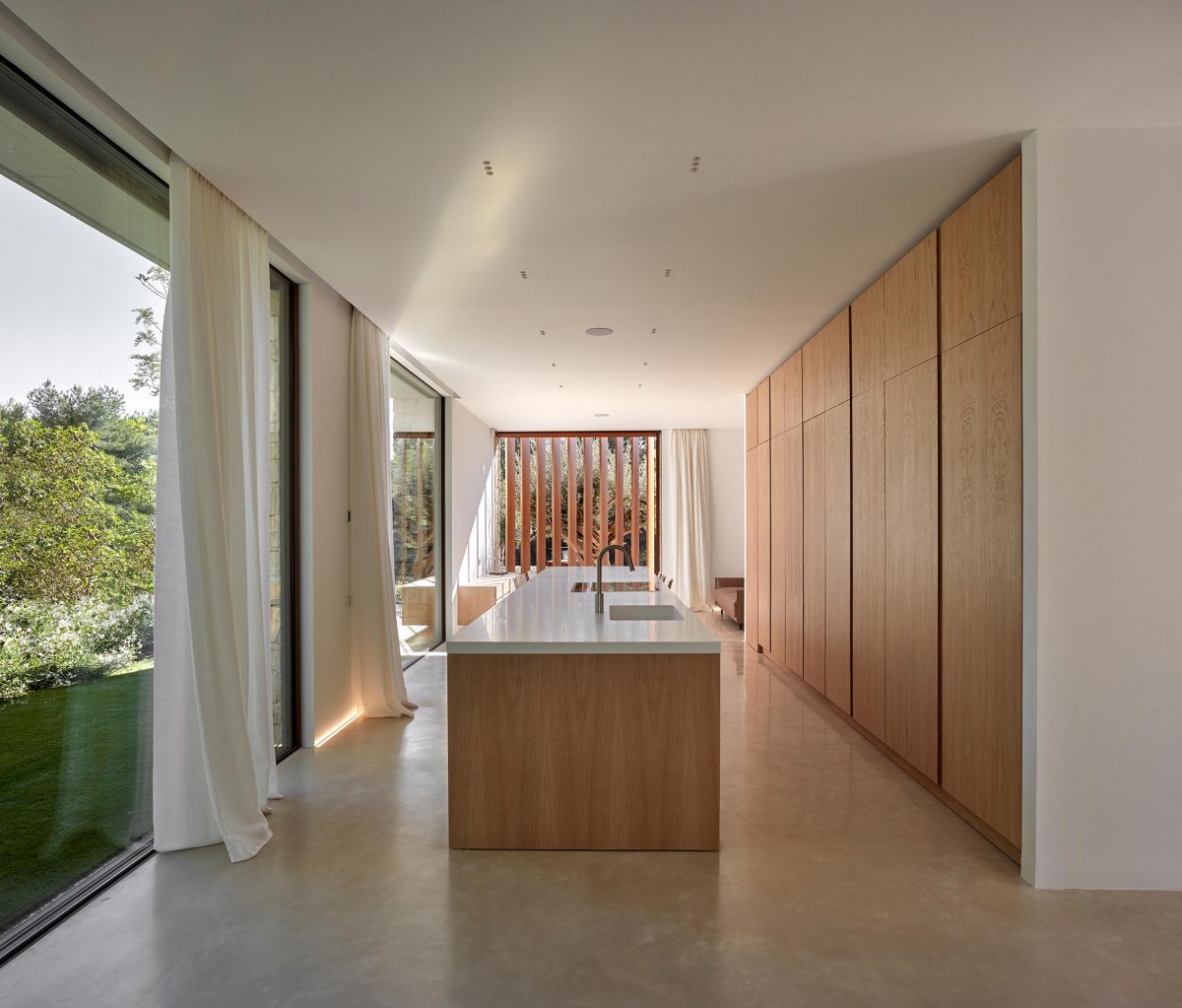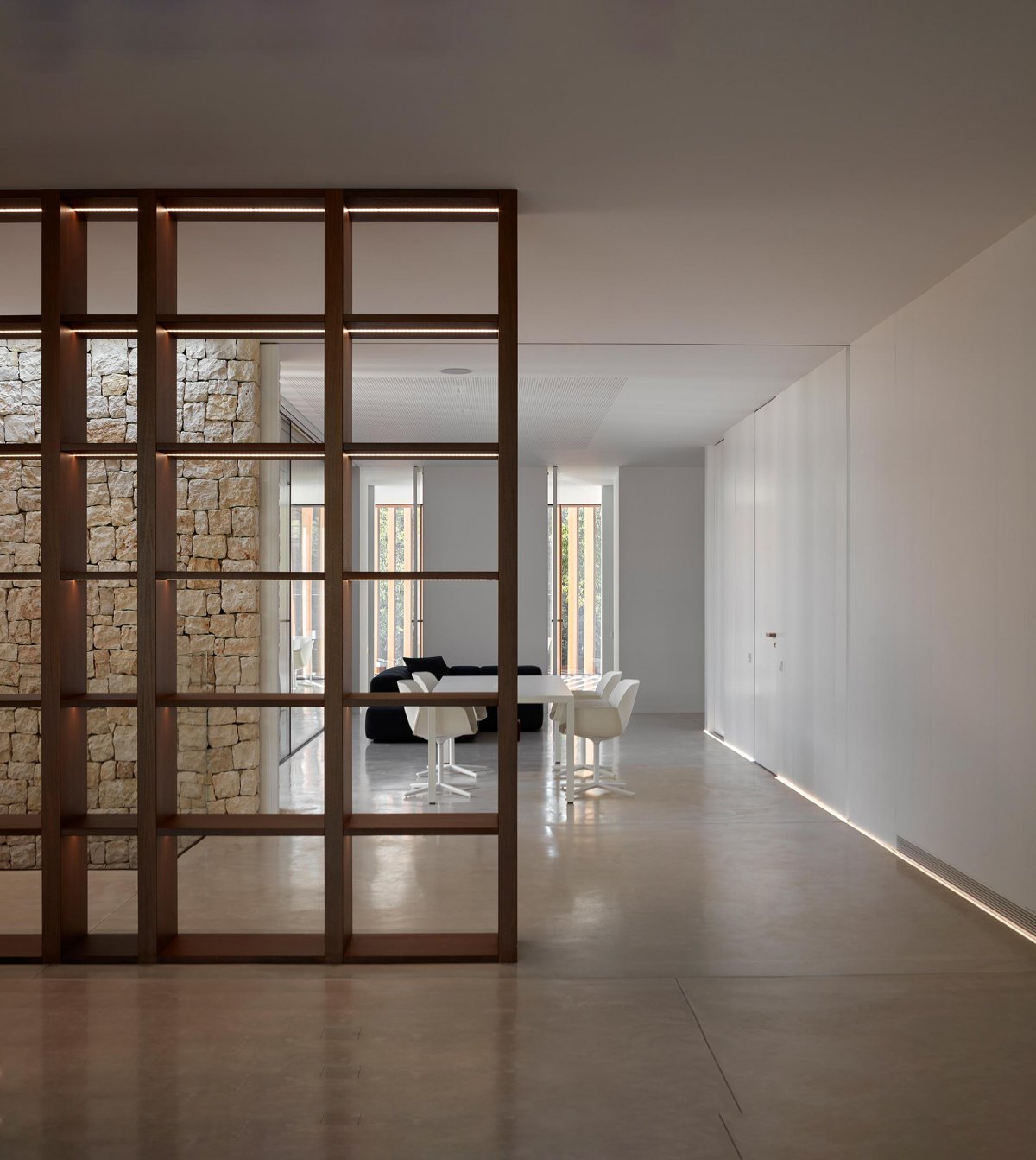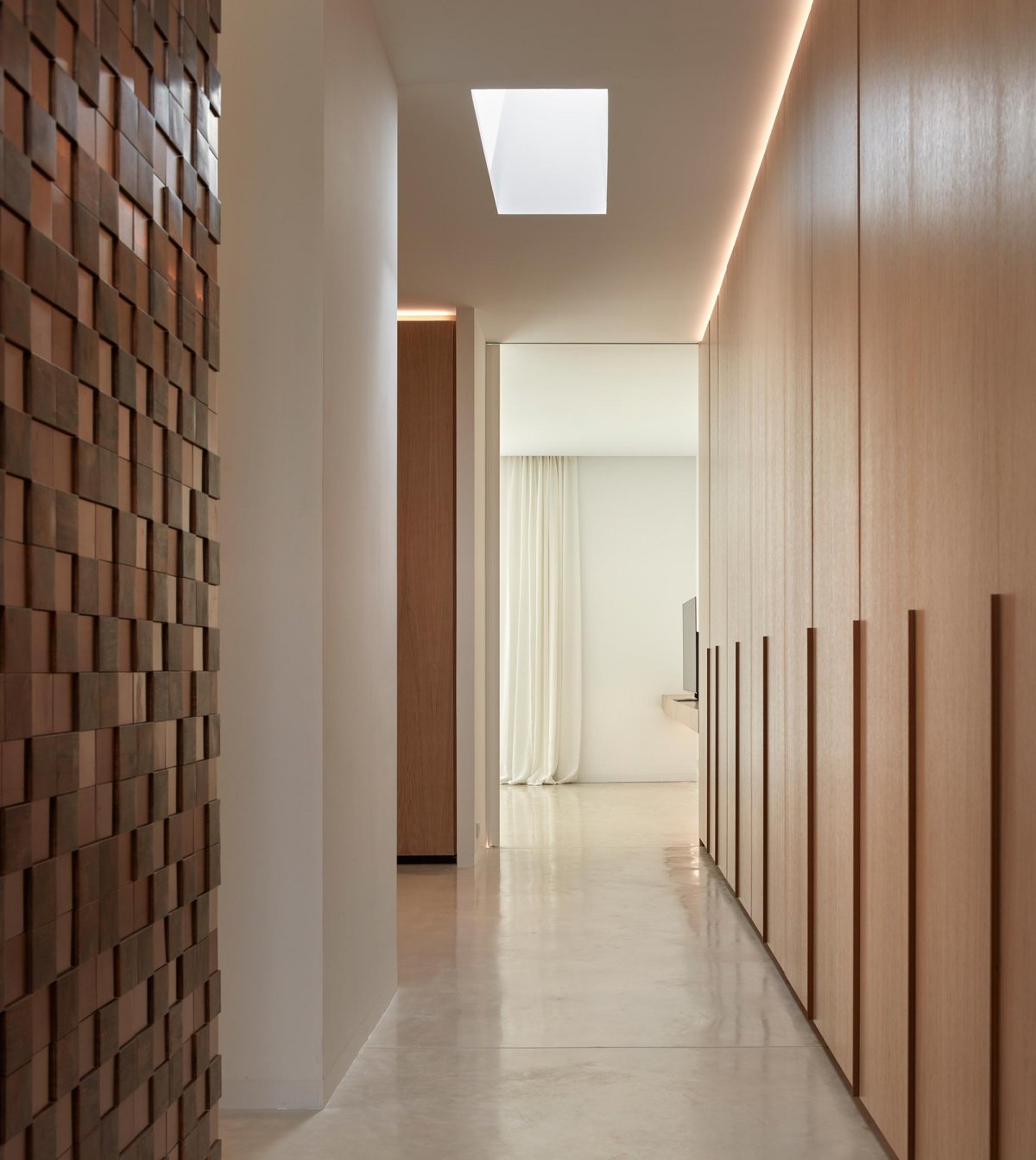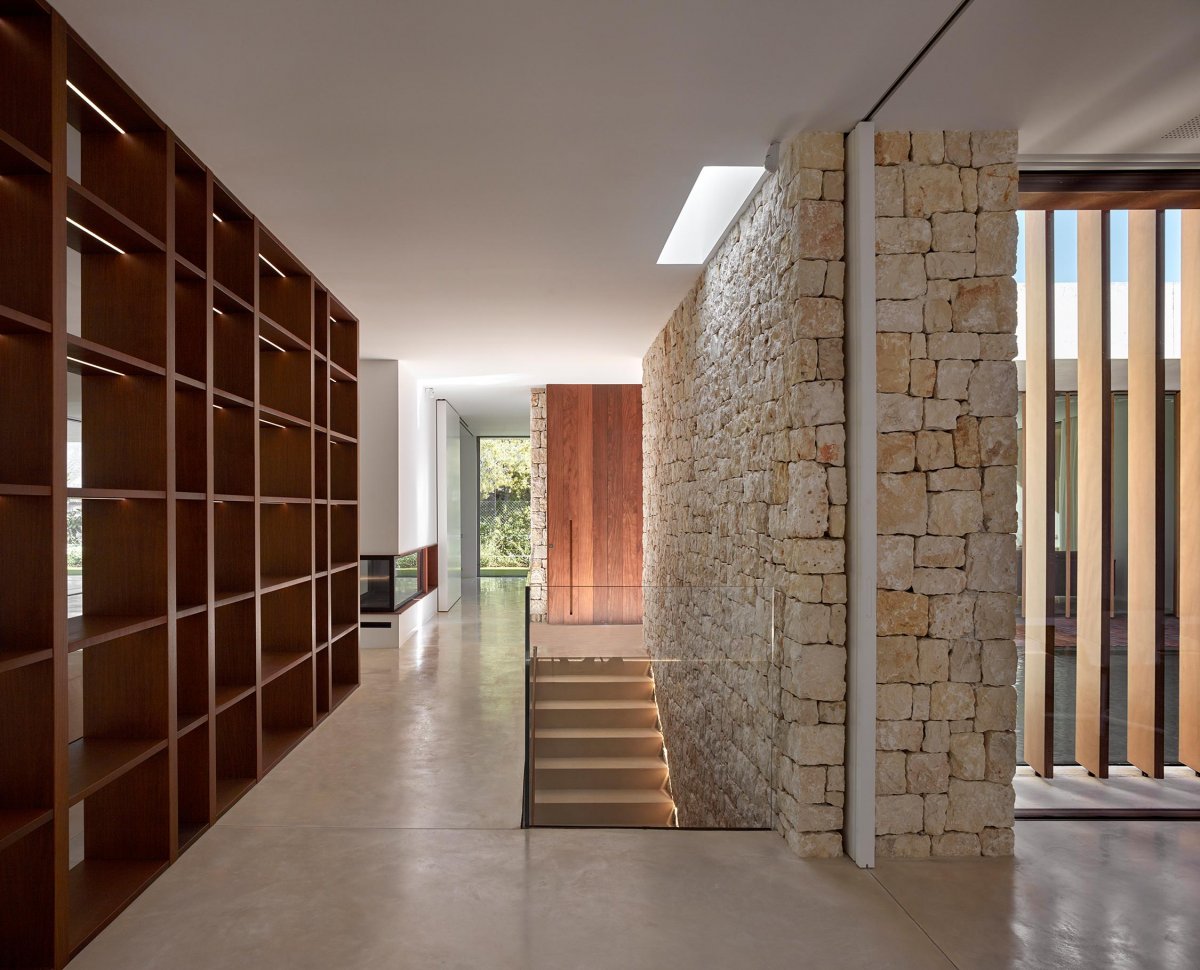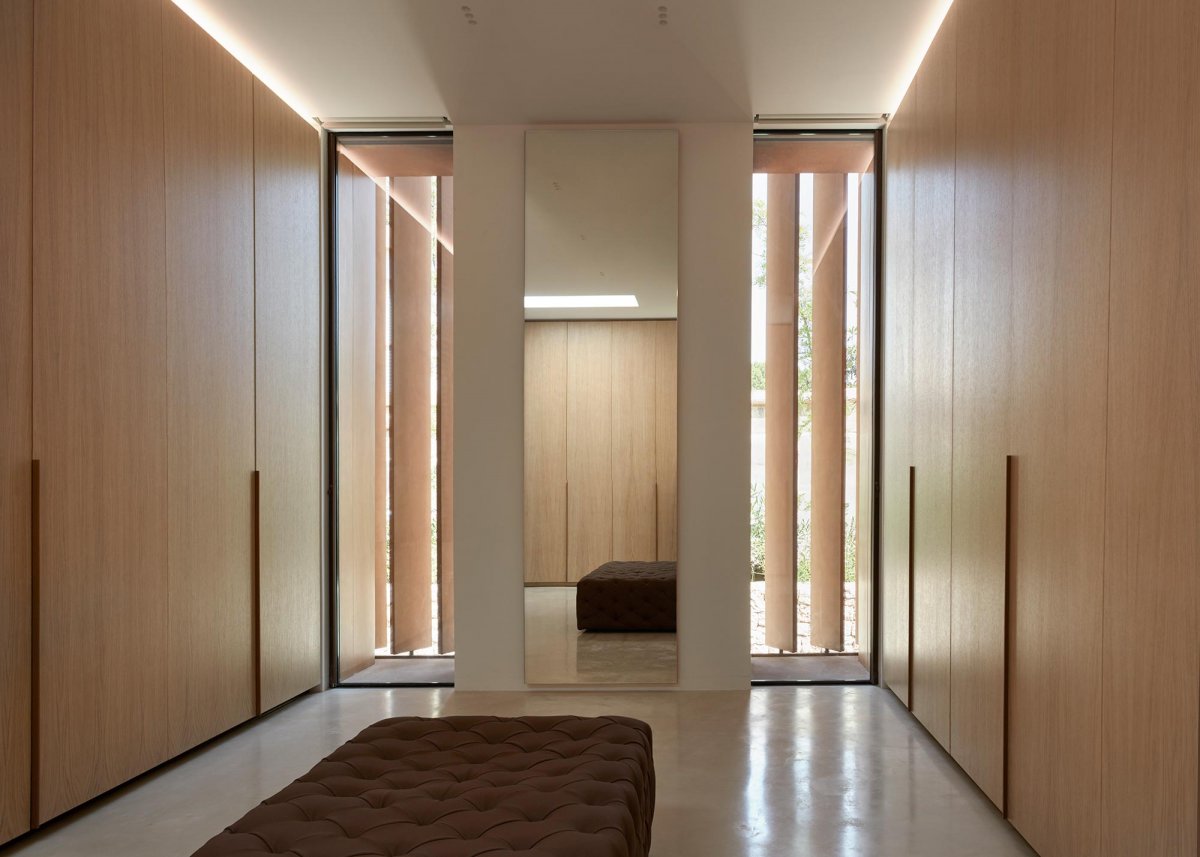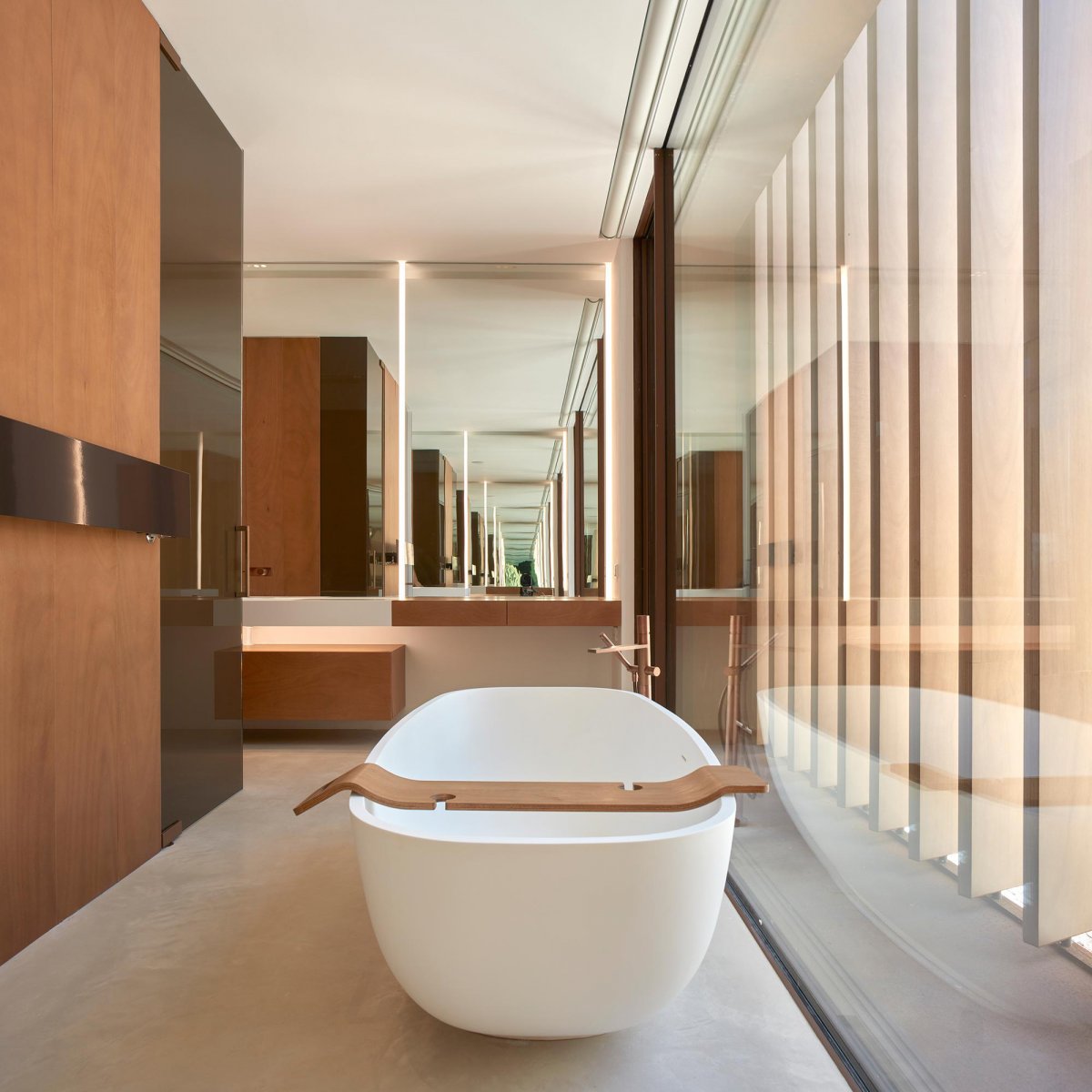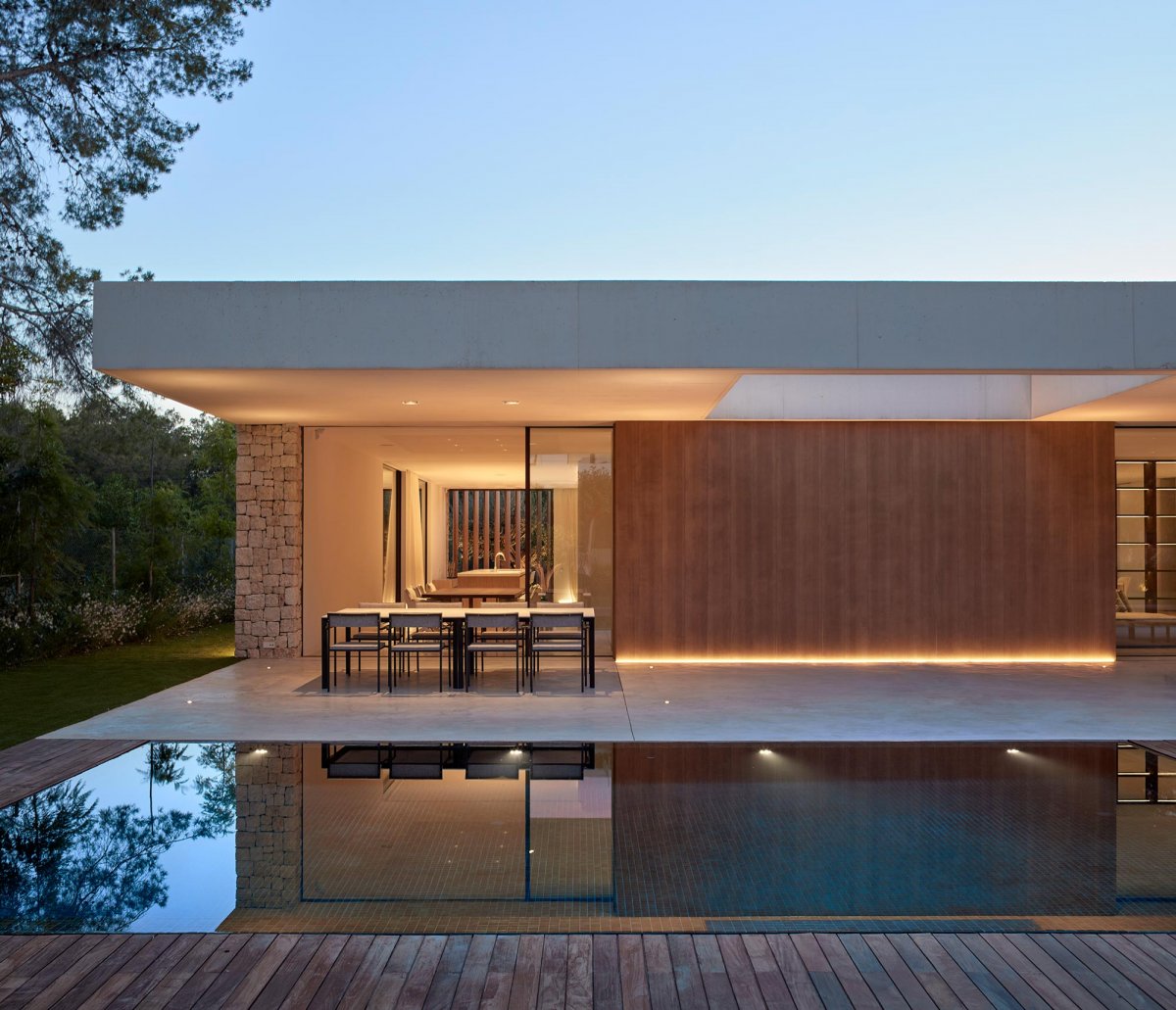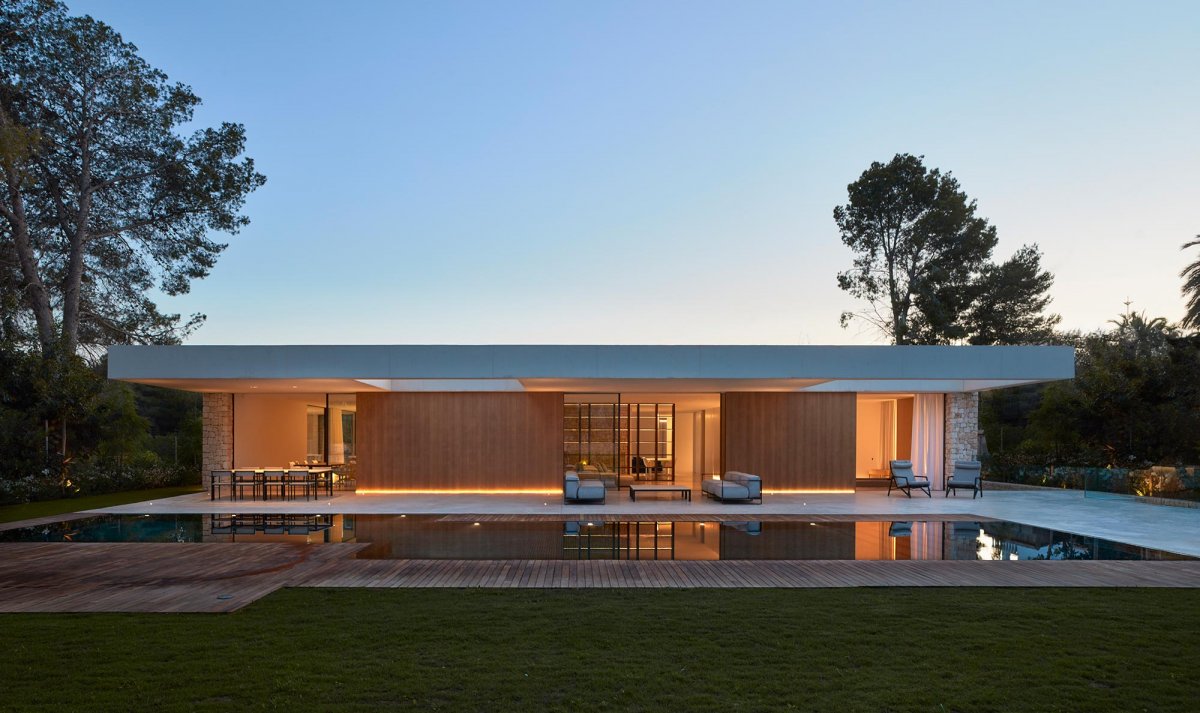
The house in La Cañada is placed on a residential area very close to Valencia. Its plot is surrounded by existing vegetation and opened to its immediate surroundings. A large number of pine trees and palm trees forms the background of the house. The origin of the project is the need of self-enclosed house, protected from the exterior but also fluid and opened to the depth of the garden. The square-plan layout is pierced by several perforations with different aims. The first of them hollows out the heart of the house and opens its perimeter. Thus, it becomes a large central courtyard that gives access to the house like a Roman atrium.
This courtyard fulfils three different uses: generating an access, organising the rooms and allowing their visual connection. A large sheet of water stands out in this space and makes it look wider by reflecting the internal fa?ade of the house and the sky. Thus, entering the house becomes a changing, pleasant and harmonious promenade.
On the opposite side of the house, a large cantilever of white concrete frames the pool and the garden. This canopy has got two perforations to allow the entrance of sunlight. In the same veranda there are different living zones for summer or winter according to the sun exposure. In order to highlight the horizontal character of the house, there is only a storey above the ground level.
A great welcoming feeling is achieved because the house has got a really human scale. The service rooms are located on the basement storey, which gets light and ventilation through a sunken courtyard on the north fa?ade. Being the access of the house at its centre, the day rooms and the night rooms are separated in a very natural way. The interior of the house has been designed to be fluid and continuous.
- Interiors: Ramon Esteve Studio
- Photos: Mariela Apollonio
- Words: Gina

